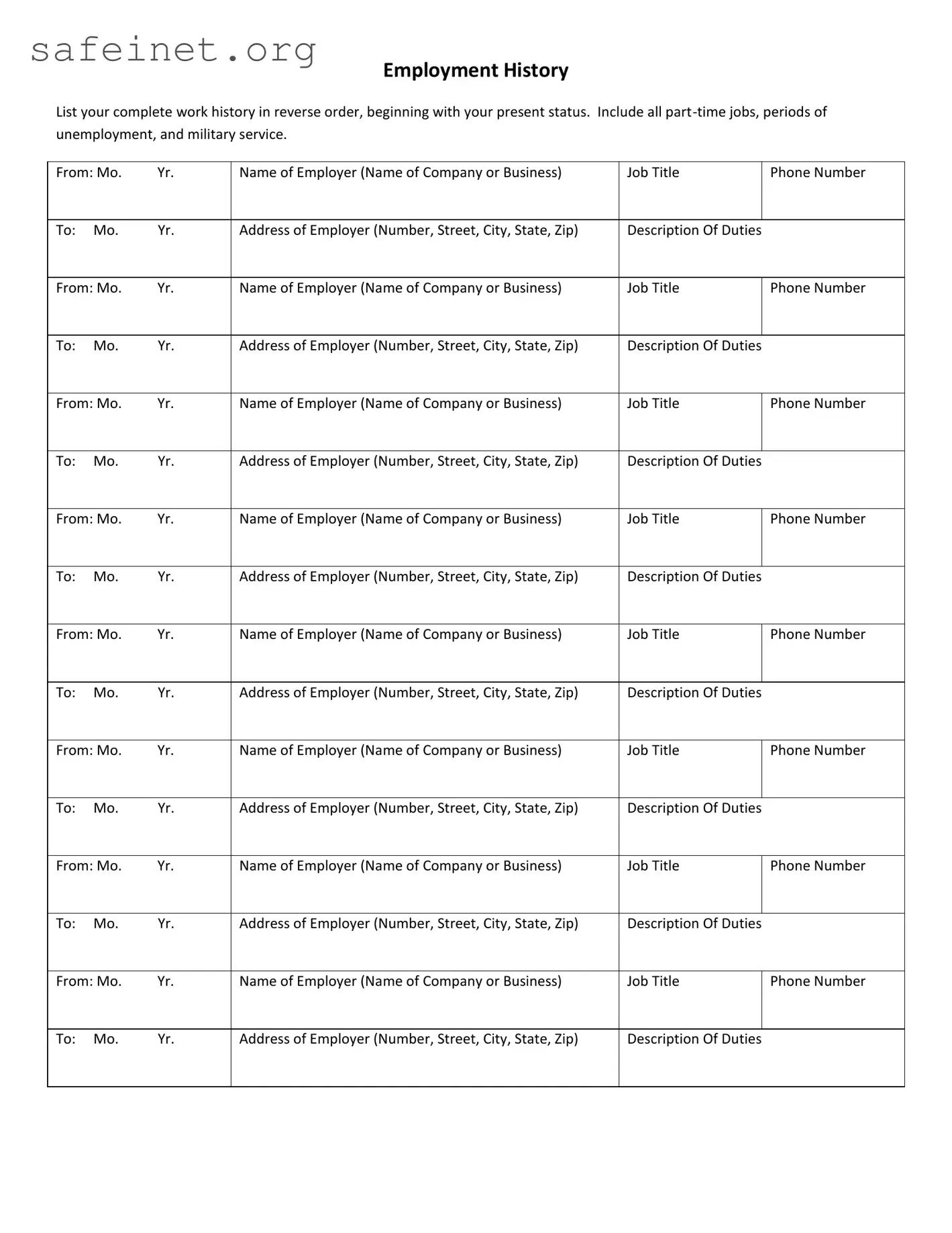What is the purpose of the Employment History form?
The Employment History form helps employers understand your work background. It allows them to see your job titles, responsibilities, and the timeline of your employment. Providing a comprehensive history can demonstrate your skills, reliability, and experience. This information is crucial when assessing your fit for a particular role.
How should I list my employment history?
Begin by listing your current or most recent job at the top, and then go backward in time. Include all relevant positions, including part-time jobs, internships, and volunteer work. Even gaps in employment should be noted, along with military service, if applicable. For each job, make sure to include the employer’s name, your job title, phone number, address, and a brief description of your duties.
What if I have gaps in my employment history?
It is perfectly acceptable to have gaps in your employment history. Be honest about these periods and consider explaining them briefly in the description, if necessary. This transparency can shed light on your journey, showing any activities you may have engaged in during those times, such as education, training, or personal projects.
Is it necessary to include part-time jobs?
Yes, including part-time jobs is important. These positions can provide valuable experience and skills that highlight your qualifications. They also show your commitment to work, even if they are not full-time roles. All experiences contribute to your overall employment narrative.
What details should I provide about my job duties?
When describing your job duties, aim for clarity and conciseness. Focus on specific responsibilities and any achievements during your tenure. Mention skills you developed and contributions you made. This section helps employers gauge how your past work aligns with the role for which you are applying.
